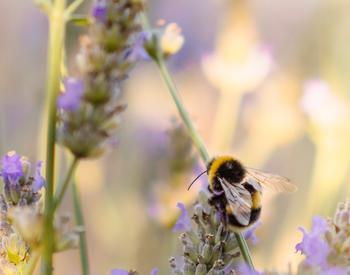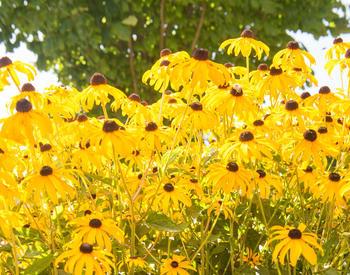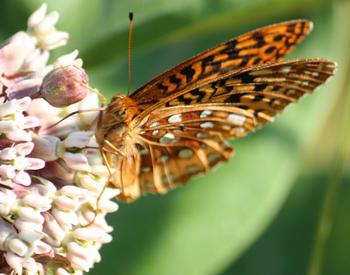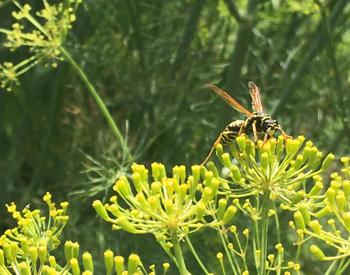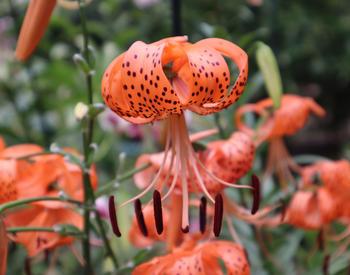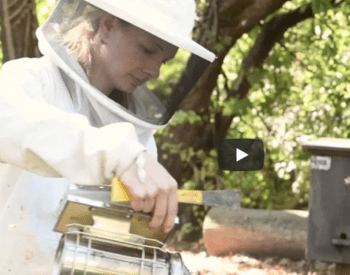Yarrow (Achillea millefolium) is a common wildflower that attracts an incredible richness of pollinators, even unintentional ones like elder bugs. It is popular because the nectar that bees and butterflies need is easily accessible on the broad, flat flower surface. Instead of flying from flower to flower and diving inside to find nectar, insects can stay relatively still and sip from many tiny florets. Watch this sweat bee, Halictus rubicundus, concentrating the nectar she has collected from the Yarrow’s nectaries. That is her tongue extending to expose the nectar. Her mandibles open and she extends her tongue, which is made up of several different parts. You can see the dark maxilla extending and the pink glossa on the end. Note, she has a full load of orange pollen from the Yarrow for her nest.
Oregon Bee Atlas participants have documented more than 15 different genera of Oregon bees on Yarrow, including all of the short-tongued bee genera, like the Halictus in the video.
